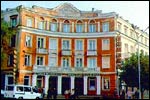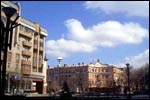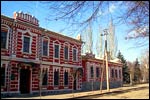
H3 Header Tag
Lorem ipsum dolor sit amet, consectetur adipiscing elit. Sed tincidunt felis in dolor ultricies convallis. Etiam mi risus, ornare elementum leo id, sollicitudin vulputate diam. Donec id hendrerit nisi. Cras eu aliquet velit. Suspendisse eget dignissim odio,vitae mollis magna. Ut egestas metus in ullamcorper auctor. Fusce quis lobortis est. Vestibulum condimentum elit in ante blandit ultrices. Nulla quis efficitur libero. Morbi et eleifend metus. Phasellus diam sem, vestibulum sed sollicitudin ac, hendrerit sagittis mauris. Duis pharetra, quam eget consequat elementum, sem tellus sodales lorem, a pulvinar tellus sapien eget massa. Nullam sit amet metus vulputate, viverra lectus a, convallis orci. Maecenas hendrerit venenatis feugiat. Cras sit amet massa a ex faucibus ullamcorper. Integer tempor diam enim, sit amet venenatis mauris consectetur non.
 Facebook
Facebook Twitter
Twitter Instagram
Instagram Youtube
Youtube Google Plus
Google Plus Wordpress
Wordpress Blogspot
Blogspot














 The town began to grow really rapidly only when iron ore reserves were found by the Ukrainian archaeologist Alexander Pol at the end of the 19th century. The first steel manufacturer was the Gdantsev Mining Equipment Factory. Krivoy Rog grew up very fast. The settlements, at first separate, were joined into one big settlement but the old names were preserved (Gdantsevka, Dekanka, Karnavatka, Sukhaya Balka, Chervonaya Balka, etc.).
The town began to grow really rapidly only when iron ore reserves were found by the Ukrainian archaeologist Alexander Pol at the end of the 19th century. The first steel manufacturer was the Gdantsev Mining Equipment Factory. Krivoy Rog grew up very fast. The settlements, at first separate, were joined into one big settlement but the old names were preserved (Gdantsevka, Dekanka, Karnavatka, Sukhaya Balka, Chervonaya Balka, etc.).
 During World War I, Krivoy Rog was occupied by the troops of Kaiser Wilhelm. The clandestine struggle was active in the town. The town survived through revolution and civil war. After a coup d'etat, the power passed on to the people, soldiers and deputies councils. The main cathedral was destroyed. This destruction occurred in the cathedral square of the town.
During World War I, Krivoy Rog was occupied by the troops of Kaiser Wilhelm. The clandestine struggle was active in the town. The town survived through revolution and civil war. After a coup d'etat, the power passed on to the people, soldiers and deputies councils. The main cathedral was destroyed. This destruction occurred in the cathedral square of the town.
 The iron content in iron ore from Krivoy Rog is very high. In 1932, the construction of Krivoy Rog Iron and Steel Works began. The living district Sotsgorod (Socialistic Town) was erected along with the Works. The first town tram was laid out and built also around that time. On August 5, 1936, the first blast furnace "Komsomolka" gave the first cast iron (the blast furnace is still presently working). On September 11, 1941, Krivoy Rog was occupied by Hitler's troops. This occupation lasted until February 22, 1944. During this time, the Germans did not export iron ore, cast iron or steel from Krivoy Rog.
The iron content in iron ore from Krivoy Rog is very high. In 1932, the construction of Krivoy Rog Iron and Steel Works began. The living district Sotsgorod (Socialistic Town) was erected along with the Works. The first town tram was laid out and built also around that time. On August 5, 1936, the first blast furnace "Komsomolka" gave the first cast iron (the blast furnace is still presently working). On September 11, 1941, Krivoy Rog was occupied by Hitler's troops. This occupation lasted until February 22, 1944. During this time, the Germans did not export iron ore, cast iron or steel from Krivoy Rog.
 Today there are approximately 1 million people in Krivoy Rog, 7 districts, 4 iron-enriching factories and multiple other types of enterprise.
Today there are approximately 1 million people in Krivoy Rog, 7 districts, 4 iron-enriching factories and multiple other types of enterprise.





